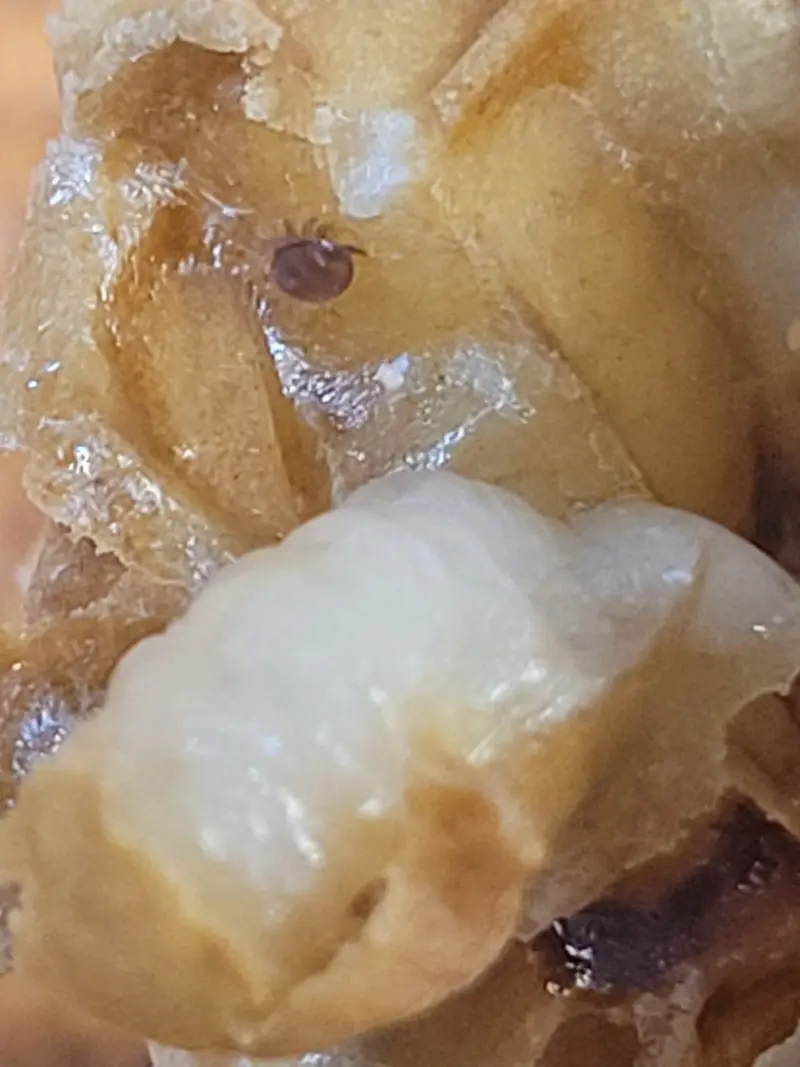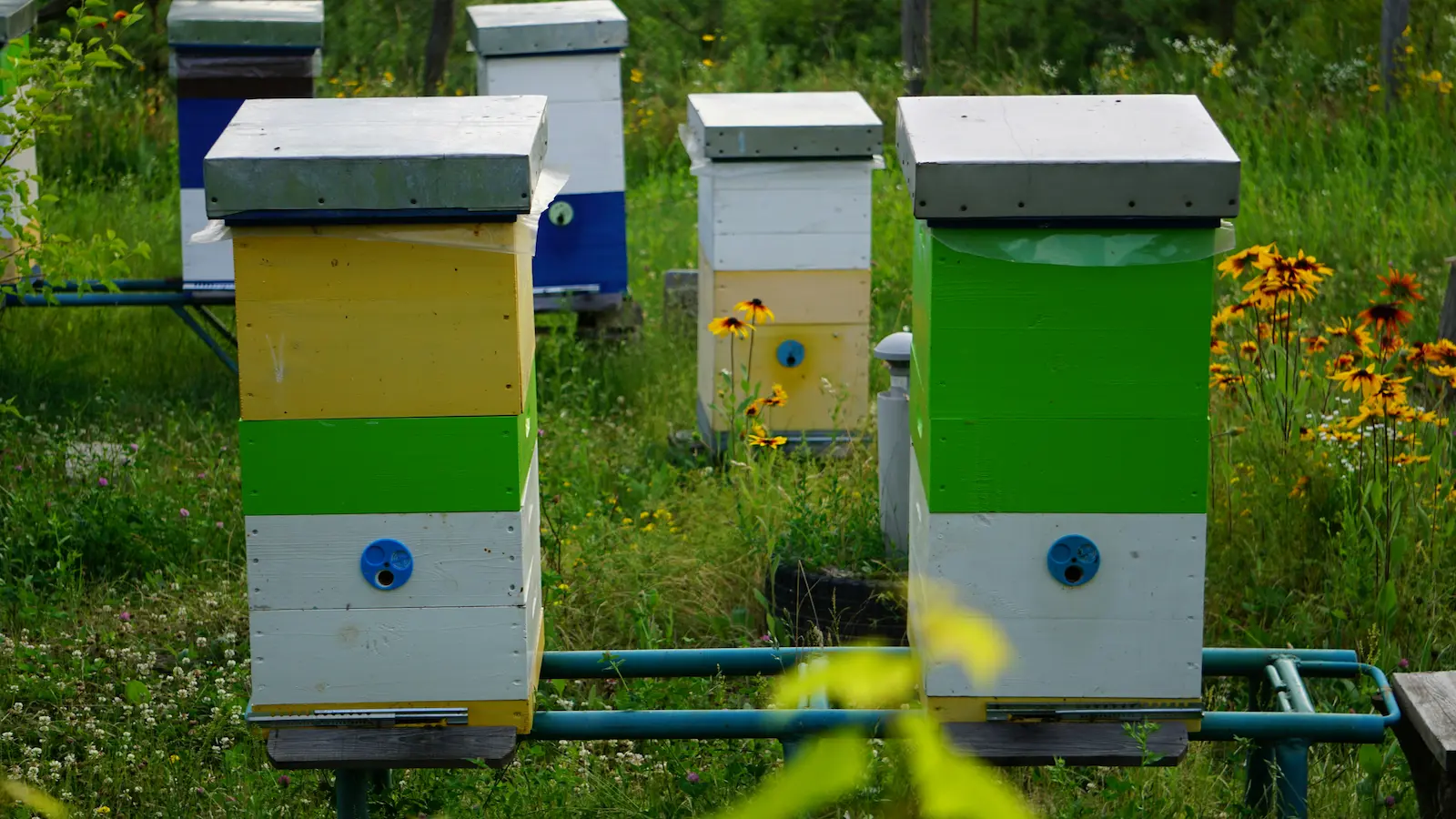Parasitic Mites in Honeybees – Varroa, Tracheal Mites and Tropilaelaps

Parasitic mites are some of the most important modern threats to honeybee colonies. The best-known species is Varroa destructor, now widespread in the UK and many other countries. Other mites, such as tracheal mites and Tropilaelaps species, are also significant in some regions and are treated as serious exotic pests.
For most beekeepers, the day-to-day challenge is learning how to live with varroa while keeping colonies productive and healthy. This page gives an overview of the main parasitic mites, how they damage bees, and how monitoring and good management fit into your wider bee disease strategy.
Contents
Why Parasitic Mites Matter
Honeybees have always faced parasites, but some of the modern mites have shifted the balance dramatically. Varroa in particular:
- feeds on developing pupae and adult bees, weakening them directly
- spreads viruses, especially deformed wing virus and paralysis viruses
- can build up quickly to levels that cause colony collapse if not monitored and controlled
The aim of the modern beekeeper is not to “eradicate” varroa – that is not realistic – but to monitor and manage mite levels so colonies stay productive and losses are minimised.
Varroa destructor – Key Facts
Varroa destructor is a small reddish-brown mite that breeds inside brood cells. It originally parasitised Apis cerana (the Asian honeybee) but jumped to Apis mellifera (our Western honeybee), which has fewer natural defences.
Varroa life cycle in brief
- Female mites ride on adult bees and feed on the fat body (a crucial tissue for immunity and energy storage).
- Shortly before a cell is capped, a mite enters the brood cell, usually a drone cell if available.
- Inside the capped cell, the mite lays several eggs; the offspring feed on the developing pupa and mate with each other.
- When the adult bee emerges, mated female mites leave with it and continue the cycle on other brood.
Because mites reproduce on brood, colonies with long periods of brood rearing (for example in mild winters or in heavily stimulated hives) can see very rapid mite build-up.
How Varroa Damages Colonies
Varroa causes a mixture of direct and indirect damage:
- Weakened brood – parasitised pupae may emerge smaller, with shortened lifespans, reduced learning ability and impaired navigation.
- Vector for viruses – mites transmit viruses such as deformed wing virus (DWV) directly into the bees’ bodies.
- Overall colony decline – as more workers are damaged or die early, the colony can no longer cover brood or gather enough food.
By the time you see many bees with deformed wings or large piles of dead bees outside the hive, varroa levels are usually already far too high. Regular monitoring and planned action are essential – see the dedicated varroa management guide for specific methods and treatment timing.
Tracheal Mites
Tracheal mites (Acarapis woodi) live inside the breathing tubes (tracheae) of adult bees. They were historically a concern in some regions, though in many modern texts they receive less attention than varroa.
Possible signs of tracheal mite problems
- Crawling bees on the ground near the hive, unable to fly.
- Bees with disjointed or K-wing (wings held in an odd “K” shape).
- General weakness or poor colony performance, especially in cooler weather.
Diagnosis usually requires laboratory examination of bee tracheae. For many beekeepers, actions taken for general health – good ventilation, avoiding damp conditions, maintaining strong colonies and controlling varroa – will also help reduce the impact of tracheal mites.
Tropilaelaps Mites and Exotic Threats
Tropilaelaps mites are brood-parasitic mites found in parts of Asia and elsewhere. They are not established in the UK at the time of writing but are treated as a serious exotic pest.
Compared with varroa, Tropilaelaps mites:
- reproduce very quickly on brood
- move rapidly across comb and between bees
- can cause severe damage and rapid colony breakdown
Because of their status as an exotic pest, any suspicion associated with imported bees, queens or equipment should be reported through official channels – typically via BeeBase and your Regional Bee Inspector.
Monitoring Mite Levels
Effective control starts with understanding what is happening inside the hive. Common monitoring methods for varroa (and, indirectly, viral pressure) include:
- Natural mite drop – using a removable floor insert to count mites falling from the colony over a set number of days.
- Sugar roll or alcohol wash – sampling a known number of bees and counting mites dislodged in sugar or alcohol.
- Drone brood uncapping – examining sealed drone brood for varroa and calculating infestation levels.
Whatever method you use, the important thing is to:
- monitor regularly through the season
- record results in a hive log or app
- use the information to plan treatments and biotechnical controls at sensible times.
Medicine records: If you use any veterinary medicines as part of mite control, record what you used, when, and which hive was treated — and keep those records for at least five years. See Veterinary medicine records .
Biosecurity and Equipment Management
Parasitic mites can spread between colonies and apiaries through a combination of natural bee behaviour and beekeeper actions. To reduce risk:
- Avoid moving suspect brood comb or bees between colonies.
- Be cautious with second-hand equipment – clean and scorch thoroughly where appropriate.
- Reduce uncontrolled robbing by avoiding spilled syrup and keeping weak colonies protected.
- Keep a simple but consistent hive hygiene routine – clean tools and gloves, especially after inspecting problem colonies.
These steps also help with foulbrood and other diseases, so they are well worth building into your normal apiary habits.
Building a Long-Term Control Strategy
There is no single magic bullet for parasitic mites. Successful beekeepers combine several approaches:
- Regular monitoring with clear records so you spot problems early.
- Timed treatments and biotechnical methods from your varroa management plan.
- Good nutrition and forage – see bee-friendly gardening to support stronger, more resilient colonies.
- Genetic improvement over time, selecting queens from colonies that cope well with mites, overwinter reliably and remain calm to handle.
Use this page alongside the bee diseases overview and detailed notes on viral diseases, bee pests and other conditions to build a broad, joined-up view of bee health in your apiaries.

